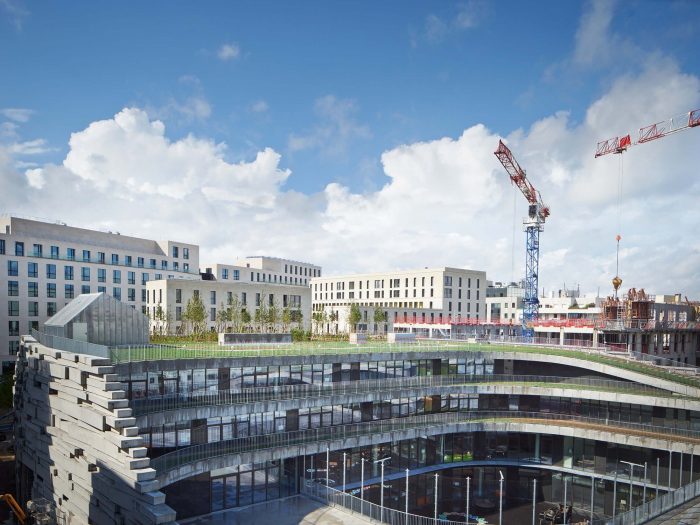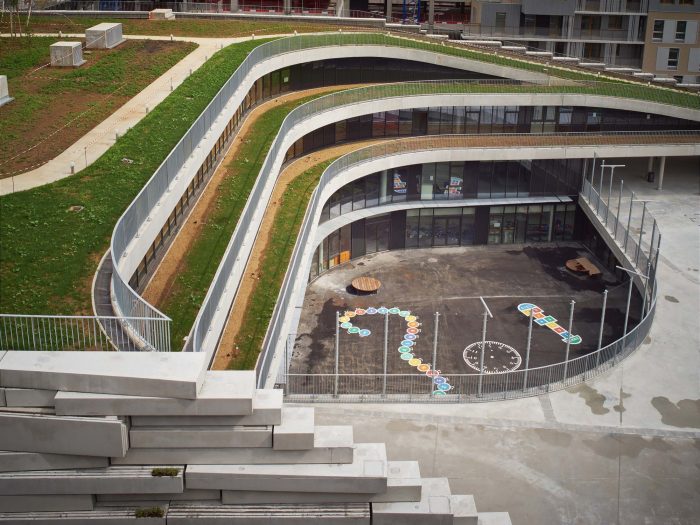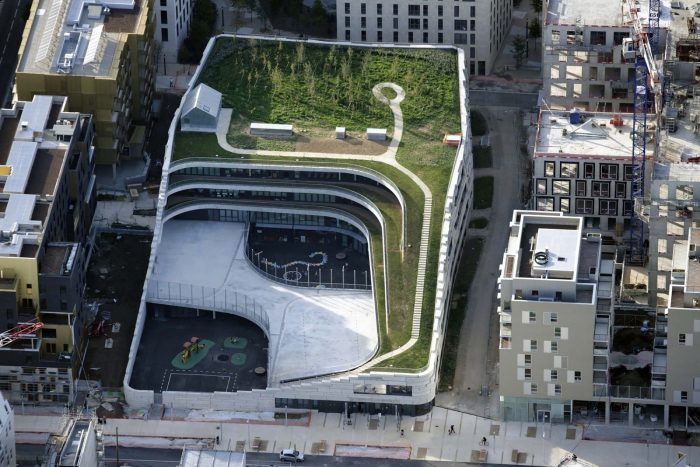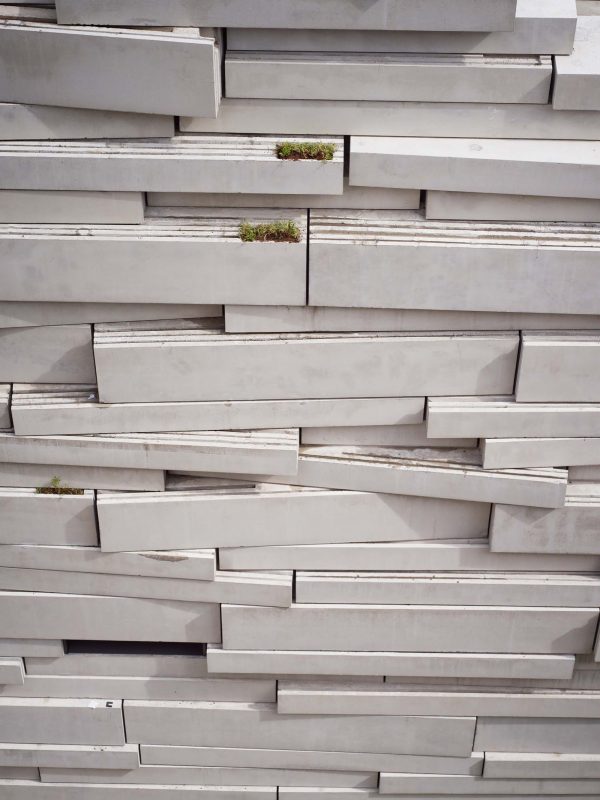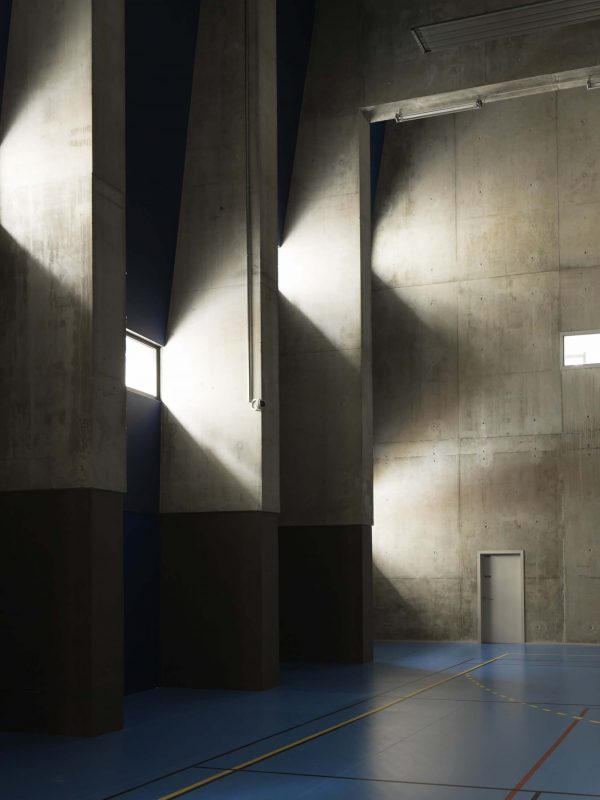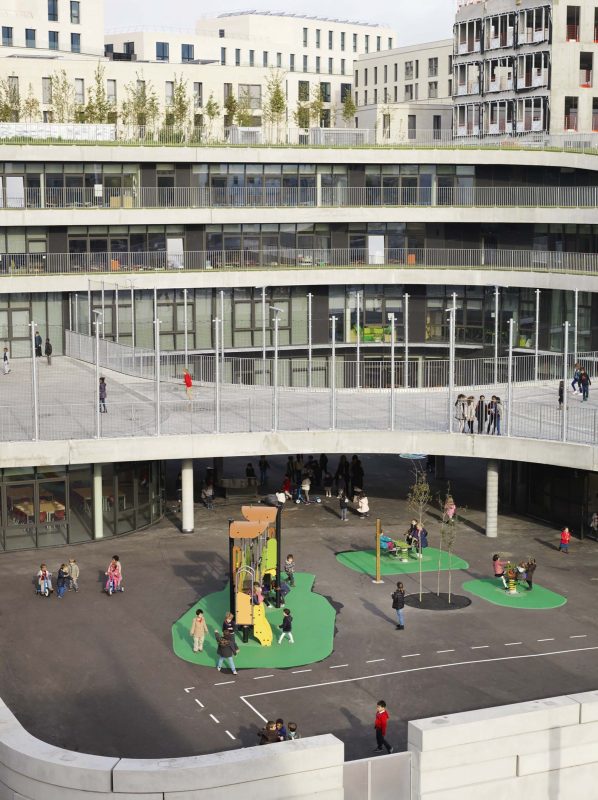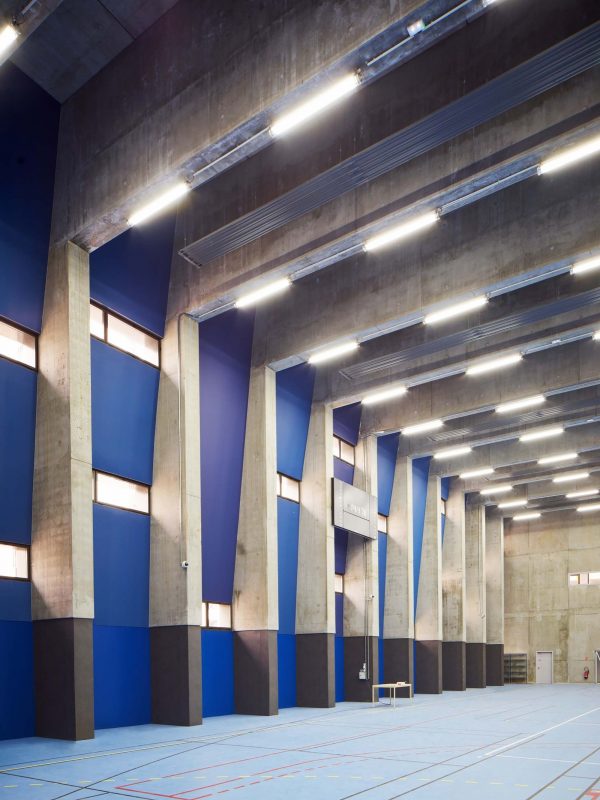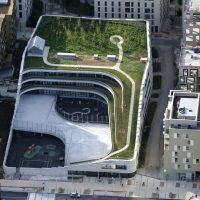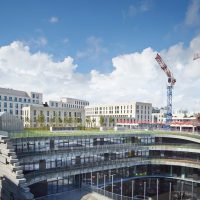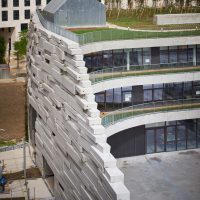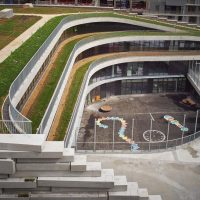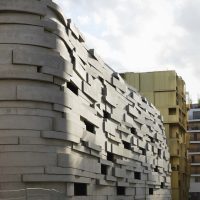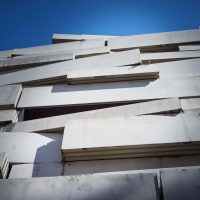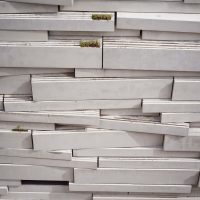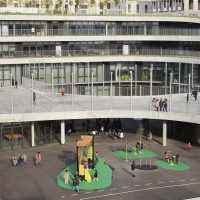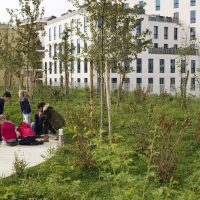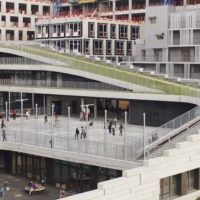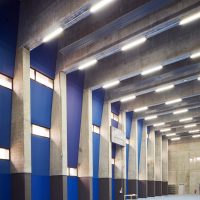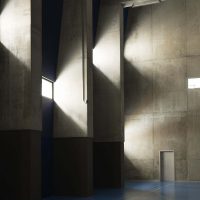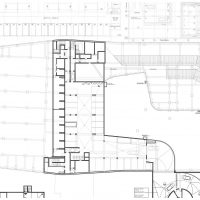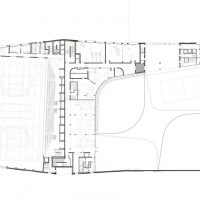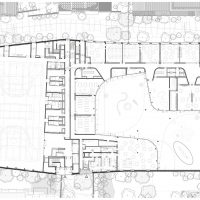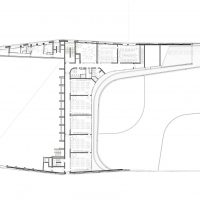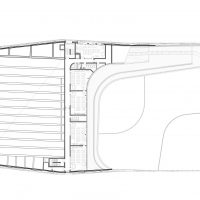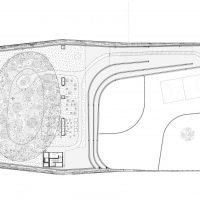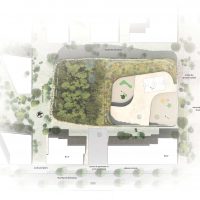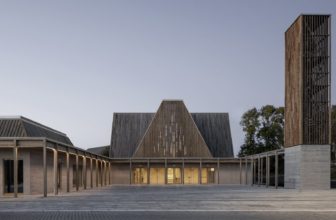Designed by Chartier Dalix Architectes, A primary school and gymnasium with their own natural environment The project has been designed as part of a particularly innovative program, environmentally speaking. The concept of the building relies on the development of a primary landscape which would draw its textures and components from the wider landscape in which it is set. In this way, it becomes an urban enclave which stands apart: an elevated landscape in which an indigenous environment grows freely, a sort of urban canopy, sheltered, but also protected by people.
This project may well signal the start of a new trend: striving to return biodiversity to the heart of urban areas. More than any other project, building a school is an opportunity to re-think the fundamental conceptual connections between poetry, education, and nature, drawing inspiration from new aesthetic impulses. Thus, the building takes up the challenge of recreating a fully functional ecosystem as a place of learning, a space where local children will go to fulfill their potential, but also a social hub for local residents.
The Context: The project involves two structures: a school with eighteen classrooms (seven pre-school, eleven primary schools) and a gymnasium which will be open to local residents. Located on the A4 Est site, in the “Seguin-Rives de Seine” ZAC (urban development zone) in Boulogne-Billancourt on the old Renault grounds, now a densely built area. The school project thus takes on particular significance: it will set the tone for the landscape within the wider site.
The two structures are united in a single volume, bounded by the same skin: the mineral wall. We wanted this wall to extend the entire project first to consolidate the entire edifice, but also because it represents a clear and definite gesture for the ZAC. This building, at the center of the A4 Est site, is the “green heart” of the island. The school thus serves as a unifying element in a landscape where which flora and fauna play a vital part in guiding re-development for the rest of the area.
The Concept: This project is a “landscape as living space” rather than a simple building. There are two distinct parts to the building: a mineral section – the facades – and a section made of plants – the roof. This envelope wraps itself around the school, a general volume with smooth contours and supply lines, revealing fluid interior spaces and elastic exterior ones, avoiding ruptures between volumes.
The highly compact building opens onto the neighborhood, offering a multitude of perspectives. The playgrounds are two outdoor spaces in conversation, in plain view of one another, gaining the measure of one another (one day the pre-school children will be in primary school). The entire building shelters a primitive natural environment which acts as a more or less long-term catalyst for biodiversity at the heart of the larger site. Indeed, this structure is alive in that its appearance changes. Through its function as a foundation for the landscape, it presents an envelope which will be different in five or ten years’ time, with all the uncertainty of nature, which does not necessarily appear where one might expect.
The Living Wall: The “bark” of the project, the living wall, is made of pre-fabricated blocks of concrete. These blocks present two different types of texture. The visible side is smooth, polished, it reflects the light. The other sides are ribbed, with a rough, rugged texture, melded into a single wall. This difference in surfaces helps to channel water towards the sides of blocks, thus avoiding trickling on the visible side and premature aging. The opposition of these two textures also emphasizes the depth of the façade and enhances its relief.
On the lower section, and up to a height of around two meters, the freestanding wall is smoothed or slopes outwards, barring access to outsiders but also potential predators. The indentations of the side faces of the wall also encourage vegetation (bowls for ferns, rough concrete for mousse); small hollows and folds are aimed at animals (overhangs for swallows, porous nooks for insects) and act as an invitation to nesting for several varieties of bird. The staggering of the blocks increases the types of potential habitat for the different species expected on the site. Nest boxes have been inserted into the concrete blocks. Their dimensions have been designed for species such as kestrels, bats, robin redbreasts, redstarts, common swifts, starlings or swallows.
The Roof: The roof is a real hanging garden, twelve meters above the gymnasium. It is home to three levels of vegetation: A prairie of mesophilic plants planted in 50 centimeters of earth, a shrub-land fringe and a woodland island planted in 1 meter of earth. The continuity of environmental corridors created by flora enables natural communication between species. This elevated garden has two functions: first, for the fauna of the wall and for its own fauna, it is rich in resources (additional living habitats, nutrition, etc.) ensuring the success of biodiversity. It also contributes to improved living conditions in the office building to the north and apartments to the south, presenting an elevated landscape.
The Project: The project presents a mixed program to build a school, a gymnasium, but also incorporate a third element: encouraging biodiversity. With distinct constraints in terms of volume and space for these three elements, we have decided to focus on the fluidity of connections between full and empty spaces and especially between different topographical levels.
These connections provide a logical order for the various elements: the straightforward, rigorous and supportive teaching spaces enter into conversation with outdoor play spaces with flexible contours which are systematically subject to a more playful accessible landscaping process, one involving visual continuity. The gymnasium rises to a height of twelve meters, while the school is mostly on the ground and first floors and then rises progressively to the third floor for the primary school.
Project Info
Architects: Chartier Dalix Architectes
Location: Boulogne-Billancourt, France
Area: 6766.0 sqm
Year: 2014
Type: Education
Photographs: P. Guignard, Cyrille Weiner, David Foessel
Project Name: Primary School For Sciences And Biodiversity
- photography by © P. Guignard
- photography by © David Foessel
- photography by © David Foessel
- photography by © David Foessel
- photography by © Cyrille Weiner
- photography by © David Foessel
- photography by © David Foessel
- photography by © Cyrille Weiner
- photography by © Cyrille Weiner
- photography by © Cyrille Weiner
- photography by © David Foessel
- photography by © Cyrille Weiner
- Basement Floor Plan
- Second Floor Plan
- Ground Floor Plan
- Third Floor Plan
- Third Floor Plan
- Site Plan


